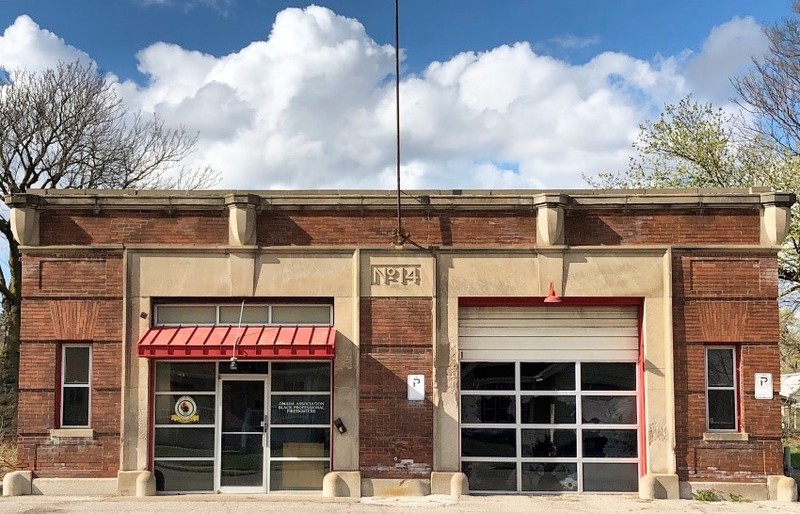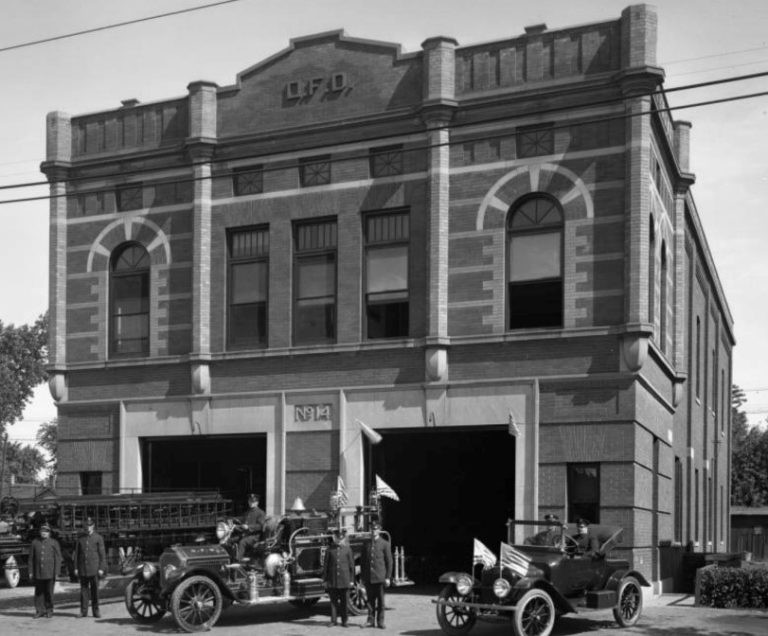Omaha Fire Department Station #14: Home of Omaha's First Black Firefighters
Introduction
Text-to-speech Audio
The establishment of the Omaha Fire Department occurred the same year the Civil War began, in 1860. It took thirty-five years (1895) for Omaha to hire Black firefighters, initially working in a segregated facility known as Fire House #12 at South 27th and Jones. In 1906, The Black Company at #12 moved to a new, still segregated, facility: Fire House #15 at North 30th and Spaulding. Finally, in 1919, the Company moved to the historic #14 Station, which still stands at North 20th and Lake. The firehouse stands as a monument to the racism within the firefighting community and society at large.
Images
Modern photo of Omaha Fire Department Station #14

Historic photo of Omaha Fire Department Station #14

Backstory and Context
Text-to-speech Audio
Mid-nineteenth-century firefighters reluctantly went to African American neighborhoods, if at all. Reports throughout the 1880s noted that African American homes burned while the firefighters saved the white home next door. Few African American firefighting units existed until 1887 when the National Council of the Order of American Firemen struck a clause from their organization that banned Black firefighters, which allowed them to join for the first time. State legislator Dr. Matthew Ricketts, Nebraska's first Black legislator, called on the City of Omaha to create an African American fire crew. The city responded to Ricketts' call in 1895 by creating an all-Black hose company (Company 12) dedicated to fighting fires in Black homes; it served the African American community for decades.
The segregated Company 12 occupied Fire House #5 at South 27th and Jones Street while the white firefighters previously assigned there transferred to new locations. Black firefighters struggled to gain acceptance from white firefighters, the media, and the public. After two months, thirty-three businessmen in the area surrounding the new Black firehouse asked the chief to remove the Black firefighters and replace them with the white firefighters who had worked there before, but the chief declined to acquiesce to their demands. Omaha's Black firefighters remained segregated for sixty-two years, usually dealing with racism, media criticism, under-staffing, poor supplies, and under-financing.
In 1919, the same year as the Omaha race riots, white flight and real estate redlining resulted in the fire station at North 20th and Lake Streets becoming home to an African American company (and the firehouse at South 27th and Jones returned to acting as a White firehouse again). Racism remained an issue in Omaha as well as nationwide. Indeed, in 1933, the NAACP uncovered a plot in Mississippi where bounties were paid to White men that lynched African American firefighters. Meanwhile, In Omaha, the KKK actively threatened Black residents in North Omaha. Throughout the first half of the twentieth century, Black firefighters were denied promotions despite passing the necessary exams (as uncovered by the Omaha Star). Thus, the Omaha City Council and the Urban League met to discuss fire department segregation, with much of the dialogue concentrated on the all-Black station at North 20th and Lake Streets. But, it wasn't until 1957 that Jim Crow segregation among stations ceased; some white firefighters volunteered to move into Station 14.
Though the laws changed, racism among firefighters did not disappear (mirroring society overall). African American firefighters could not eat with or sleep in the same rooms as White firefighters, nor could they conduct fire inspections on White property for several years after the desegregation of the firehouses. But, in 1960, Herbert Davis (1936-1998) became Nebraska's first African American Battalion Chief. William H. "Bill" Johnson joined the Omaha Fire Department the following year in 1961. Nineteen years later, in 1980, Johnson became the second Black firefighter to become Battalion Chief. Also, in 1990, he was the first to be promoted to assistant fire chief and served as acting fire chief before retiring in 1999.
Firehouse #14 serves as a reminder of the strong racial divisions that existed for decades in Omaha and its effect on the town's firefighting organization.
Sources
"African American Firefighters." Omaha Public Schools. Accessed February 16, 2023. https://www.ops.org/Page/1824#:~:text=Omaha%20has%20a%20long%20and,first%20Black%20firefighters%20were%20hired.
"A History of African American Firefighters in Omaha." North Omaha History. Accessed February 16, 2023. https://northomahahistory.com/2023/01/17/a-history-of-african-american-firefighters-in-omaha/.
Theil, Jocelyn. "More Than a Century of African American Firefighters in Omaha ." Clio: Your Guide to History. June 7, 2016. https://www.theclio.com/entry/22510.
Omaha Design; https://omahabydesign.org/old-firehouse-new-life-exploration-by-design/
Omaha Design; https://omahabydesign.org/old-firehouse-new-life-exploration-by-design/
